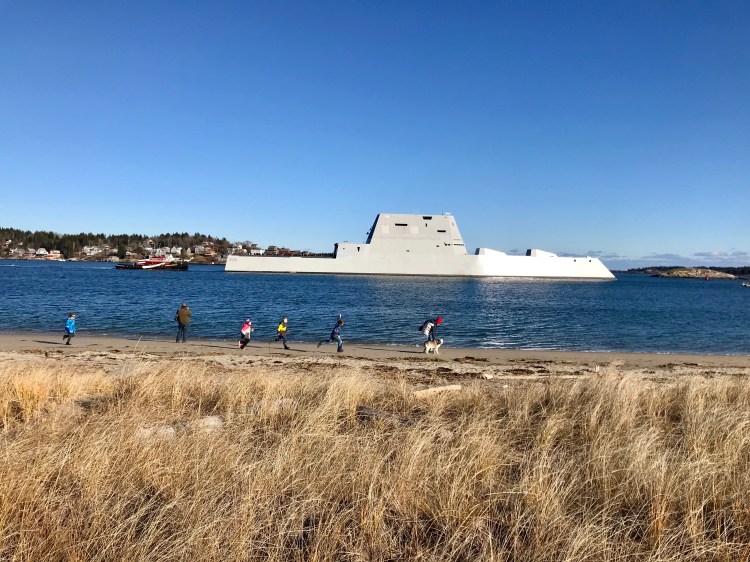BATH — The second stealth destroyer being built in Maine for the Navy has cut short its first sea trials after an equipment failure.
The Navy said the problem happened Tuesday, a day after the future USS Michael Monsoor left Bath Iron Works.
Last year, the first stealth destroyer, the USS Zumwalt, also experienced several high-profile mechanical failures after it was delivered to the Navy, including one incident while transiting the Panama Canal.
At the time, experts said that mechanical and technological problems are anticipated in the first ship of a new class. The Zumwalt is currently being outfitted with its weapons and other systems at its home base in San Diego.
A spokeswoman for the Naval Sea Systems Command said the equipment failure during builder trials of the Monsoor prevented workers from testing propulsion and electrical systems at full power. The ship returned to the shipyard under its own power Thursday, and will return to sea after the problem is addressed.
Fabrication of the Monsoor began in 2010, with the keel-laying ceremony taking place in May 2013 and the christening was held last June. The ship is named for Petty Officer 2nd Class Michael Monsoor, a Navy SEAL who was killed in Iraq in 2006 when he covered a grenade with his body to shield others from the blast. Monsoor was posthumously awarded the Medal of Honor by President George W. Bush.
Sea trials are the first major test of the high-tech ship before a Navy inspection team conducts additional at-sea testing early next year. The high-tech ships utilize new technology including a new electric-drive propulsion system.
BIW, which is owned by Virginia-based General Dynamics, currently has six destroyers at various stages of construction in its Bath shipyard: two Zumwalt-class stealth destroyers and four of the Arleigh Burke-class destroyers that have provided guided missile capabilities around the globe.
The Zumwalts are the largest and most technologically advanced destroyers ever built for the Navy. They are designed to appear as much smaller vessels on radar thanks to their smooth exterior surfaces, “tumblehome” hull and other design features. While they are significantly larger than Arleigh Burke-class destroyers, automation will allow the Zumwalts to operate with half the crew of the other class. Zumwalts also are regarded as technological showcases for future ships in terms of their all-electric powerhouse and weaponry.
All of that technology comes at a cost. The Congressional Research Service has estimated that each of the three ships will cost more than $4 billion to construct, compared to about $1.6 billion for Arleigh Burke-class destroyers.
Send questions/comments to the editors.


